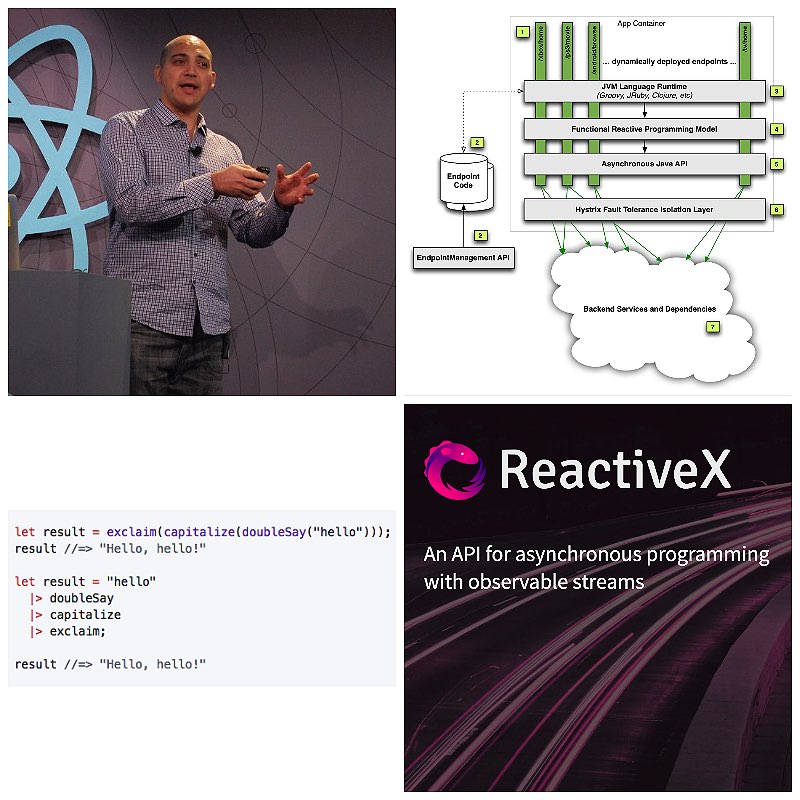Reactive Programing at Netflix with Jafar Husain

A discussion with T39 member Jafar Husain, one of Lyle’s software engineering colleagues at Netflix about Jafar’s growth as a developer and journey from Object oriented development to functional development and the Reactive Programing pattern used in Rx.
This is a highly technical episode of GeekSpeak.
CiteSeerX — Programming with circles, triangles and rectangles
This paper proposes extending popular object-oriented programming languages such as C#, VB or Java with native support for XML. In our approach XML documents or document fragments become first class citizens. This means that XML values can be constructed, loaded, passed, transformed and updated in a type-safe manner. The type system extensions, however, are not based on XML Schemas. We show that XSDs and the XML data model do not fit well with the class-based nominal type system and object graph representation of our target languages. Instead we propose to extend the C # type system with new structural types that model XSD sequences, choices, and all-groups. We also propose a number of extensions to the language itself that incorporate a simple but expressive query language that is influenced by XPath and SQL. We demonstrate our language and type system by translating a selection of the XQuery use cases.
Alan Kay On Messaging
The big idea is “messaging” – that is what the kernal of Smalltalk/Squeak
is all about (and it’s something that was never quite completed in our
Y combinator - Rosetta Code
In strict functional programming and the lambda calculus, functions (lambda expressions) don’t have state and are only allowed to refer to arguments of enclosing functions. This rules out the usual definition of a recursive function wherein a function is associated with the state of a variable and this variable’s state is used in the body of the function.
Reactive programming - Wikipedia
In computing, reactive programming is an asynchronous programming paradigm concerned with data streams and the propagation of change. This means that it becomes possible to express static (e.g. arrays) or dynamic (e.g. event emitters) data streams with ease via the employed programming language(s), and that an inferred dependency within the associated execution model exists, which facilitates the automatic propagation of the change involved with data flow.
ReactiveX
An API for asynchronous programming
with observable streams
Reactive Programming at Netflix – Netflix TechBlog – Medium
Hi, my name is Jafar Husain. I
tc39/proposal-pipeline-operator: A proposal for adding the simple-but-useful pipeline operator to JavaScript.
This proposal introduces a new operator |> similar to F#, OCaml, Elixir, Elm, Julia, Hack, and LiveScript, as well as UNIX pipes. It’s a backwards-compatible way of streamlining chained function calls in a readable, functional manner, and provides a practical alternative to extending built-in prototypes.

